Everyone in my family plays a musical instrument. As a kid I wanted to play too, but someone else was already playing guitar, banjo, mandolin, and fiddle, and that made it very difficult to choose my own instrument. I longed to find one that would be mine alone. I wanted to stand out.
One Saturday afternoon, I was watching television with my dad. We were checking out his favorite bluegrass band, led by guitarist Lester Flatt and banjo picker Earl Scruggs, who had the Flatt and Scruggs Grand Ole Opry Show, sponsored by Martha White flour. The band was gathered around a single microphone when suddenly one of the players by the name of Uncle Josh Graves came up from the back. I noticed he wasn’t holding his guitar in the usual way. It was suspended horizontally by its strap, and he played with his hands hovering over the top of the guitar. His left hand gripped a metal bar, which he pressed against the strings.
This guitar was like none I had seen. It had a large, round metal plate on top that looked like a shiny hubcap, and a fat, square neck. As he soloed, my ears perked up. I’d never heard anything like it, and I immediately knew I’d found my instrument! It was called a Dobro.
My life was never the same after that. I went on to not only play that instrument to this day, but I’ve had the pleasure of building Sho-Bro resonator guitars for Sho-Bud, as well as resonators for the Original Musical Instrument Company (aka Dobro), Crafters of Tennessee (builders of Tut Taylor resonators), and more recently, to having my own Owens line of resonator guitars for a time. I was also fortunate enough to spend time around the Dopyeras, the first family of the resonator guitar, and their direct torchbearers, and to hear so many wonderful stories about my favorite instrument’s history.
And So It Began
As with seemingly everything in the world of guitars, the history of the resonator is hotly debated. But my research, which includes many conversations with elders who were there in the instrument’s early decades, and popular consensus says it begins with John Dopyera.John came from a large musical family. His father was a talented musician and a luthier of fine violins in their native Slovakia. John had built his first violin by his teens and was following in his father’s footsteps to become a master builder of instruments. As the winds of war began to blow through Europe, the Dopyera family moved to California in 1908 to pursue a better life. In the 1920s, John opened his own small music shop in Los Angeles, where he built and repaired violins, banjos, and guitars. John had an eye for what made instruments best for players and patented some improvements for both violins and banjos before he and his brothers, Emil and Rudy, would begin building the first production resonators.
But I’m getting a little ahead of the story. As John Dopyera’s shop was flourishing, so was a new craze: Hawaiian music. It was played lap style with a handheld bar—called a tone bar, these days—sliding along the strings of acoustic guitars known as Hawaiian steels, which were set in open tunings. (For a primer on this bar technique, see Andy Ellis’ “Hand Jive! Master the Fundamentals of Lap Steel” at premierguitar.com.) The crying, breathy melodies played on these instruments were a sensation with musicians and listeners alike.
The more popular brands of these Hawaiian lap guitars were Weissenborn and Kona. And these stringed critters were a little different from a regular “Spanish” guitar: They had squared necks that were hollow up to the 2nd or 9th fret, depending on the model and brand. Most were made of Hawaiian koa wood. They sound beautiful and are much sought-after today, but back before amplification really took hold, their volume couldn’t compete with that of banjos, mandolins, drums, pianos, or the other instruments in most bands. For that matter, even guitars were still mostly parlor-size—and thus relatively quiet—in the 1920s. But here’s what happened next.
John Dopyera’s patent drawings for the original tricone resonator assembly (left), and his spider bridge variation, show a debt to Thomas Edison’s concept of transmitting vibrations to create sound.
The National Arrives
One of the artists playing the Hawaiian steel was a Vaudevillian named George Beauchamp. He also played violin and was a tinkerer who was always looking for something that would give him an edge over the competition. Knowing John Dopyera’s knack for improving the playability of instruments, Beauchamp approached him about a way to increase the volume of the Weissenborn-style Hawaiian guitar. John came up with an idea based on the Edison phonograph’s method of creating volume via a small disk attached to a horn. But with the first resonator guitar, instead of a needle attached to the disk to transfer the sound from a spinning cylinder, the vibrations of strings laying across the surface of a bridge were transferred from that bridge to a horn, or, in this case, the now-familiar hubcap-like cone I first saw on TV.In the original resonators that Dopyera built, three handspun aluminum cones amplified the vibrations of the strings via a cast aluminum T-bar attached to the bridge, which sat atop a stamped brass body designed to provide a louder, more metallic sound. John Dopyera and Beauchamp knew they had something, so with Emil and Rudy, along with other investors, they formed the National Stringed Instrument Corporation in 1927.
The look of the classic National Style 1 Tricone has remained unchanged for 91 years: a brass body and coverplate that’s nickel-plated and buffed to a reflective shine. Photo courtesy of National Reso-Phonic Guitars
Enter the Dobro
It didn’t take long for in-fighting to begin among National’s founders. It came in the form of claims on designs and accusations of mismanagement. So John, Emil, and Rudy left National to start a new company. They called it Dobro—which has become commonly used as a generic term for the resonator guitar but is really a brand name for instruments made by the Dopyeras’ company.They wed the first two letters of their family name with a slang term for brothers—“bro”—to create the Dobro brand. Not coincidentally, “dobro” is also the Slovakian word for “good.” I’m telling you, these guys were clever!
Having walked away from National with no money for making new stamping dies and wanting to step away from their original designs, the Dopyera bros started working on a new design that John had been developing while at National. Rudy held its patent to avoid conflict with their former partners, who knew that John had been cooking up something new while at National—which was by now also building single-cone resonator guitars.
Likely by accident, as part of an effort to cut costs, Dobro did something quite extraordinary: They switched to a wooden body and, to hold their new one-cone design, created a soundwell inside the body of their guitars. A wooden body allowed the generated tones to benefit from compression, and they reversed the single cone for forward projection, making for a louder instrument. That’s right, until then, resonator guitars exclusively projected sound toward the back before it flowed out through the ports on the top of the guitars’ bodies. And many resonator instruments built along classic lines still do that today.
Here’s the parallelogram soundwell in the body of a Bashful Brother Oswald signature Dobro. The soundwell was a Dobro innovation that increased volume and helped create the honking tone that’s now familiar to bluegrass and country fans. Photo by Richie Owens
One more refinement that the Dopyeras’ developed was a centered aluminum bridge called a spider, which looks a bit like its eight-legged namesake. The outer legs of the spider bridge touched the ridged edges of the cone, more efficiently channeling vibrations from the strings and wood to the cone. It produced a louder, richer, woodier tone than earlier resonator guitars—thanks also to the two round, screened holes in the upper section of the guitar’s body that allowed air and, therefore, more sound to project out. Think of it as a primitive version of the modern speaker cabinet but built right into the guitar.
Like Peanut Butter and Chocolate, with Lawyers
As often happens when two businesses have their fingers in the same tasty pie, relations between the Dopyera and the Beauchamp camps remained strained. The Dopyera’s filed a suit and eventually regained control of National, combining the two companies in the spring of 1935 and forming the National-Dobro Corporation. (Eventually the Dopyeras and Beauchamp reconciled.) During the course of the Great Depression, the Dopyeras had turned to other manufacturers for the bodies and other components of their guitars. Regal, Harmony, and Kay eventually all became suppliers, and by 1937 the torch was wholly passed to Regal, which became the sole maker of resonator guitars—marketed under the Regal, Dobro, Old Kraftsman, Recording King, and Ward brands, among others. Regal ceased to produce resonators when the U.S. entered World War II.
Recording King resonator guitars in the squareneck Dobro-style were at one time made by Regal in California. Today’s Recording Kings, like this RR-60, are made in China and set up and inspected in the U.S.
Photo courtesy of The Music Link
But once again, I’m getting ahead of myself. There was one more important development in the 1930s. The National-Dobro Corporation was transformed into a new brand you’ve probably heard of: Valco—best known for manufacturing Supro and Airline amps and guitars at the dawn of rock ’n’ roll. In Valco’s early years, they made all styles of fretted instruments under many names, so the National and Dobro brands continued, but eventually the Dopyera brothers dropped out of the business—not returning to it until 1959, when Emil started manufacturing resonators again under the Dopyera’s Original banner. He sold that company to Semi Moseley, who absorbed it into Mosrite and made Dobros for several years.
If that’s not complicated enough to follow, in 1967 Rudy and Emil decided to have another go at making their family’s legacy instruments and created the Original Musical Instrument Company. At first they sold their axes under the Hound Dog brand, but when Mosrite went into liquidation in 1970, they reacquired the Dobro product name.
Over the years, the companies and brand names in the world of resonator guitars have expanded. Today they include National, Hound Dog, Recording King, Fender, Dobro, Washburn, Dean, Beard, Scheerhorn, Amistar, Republic, Gold Tone, and more. Keeping track of all the production and boutique resonator makers out there can be a bit head-spinning.
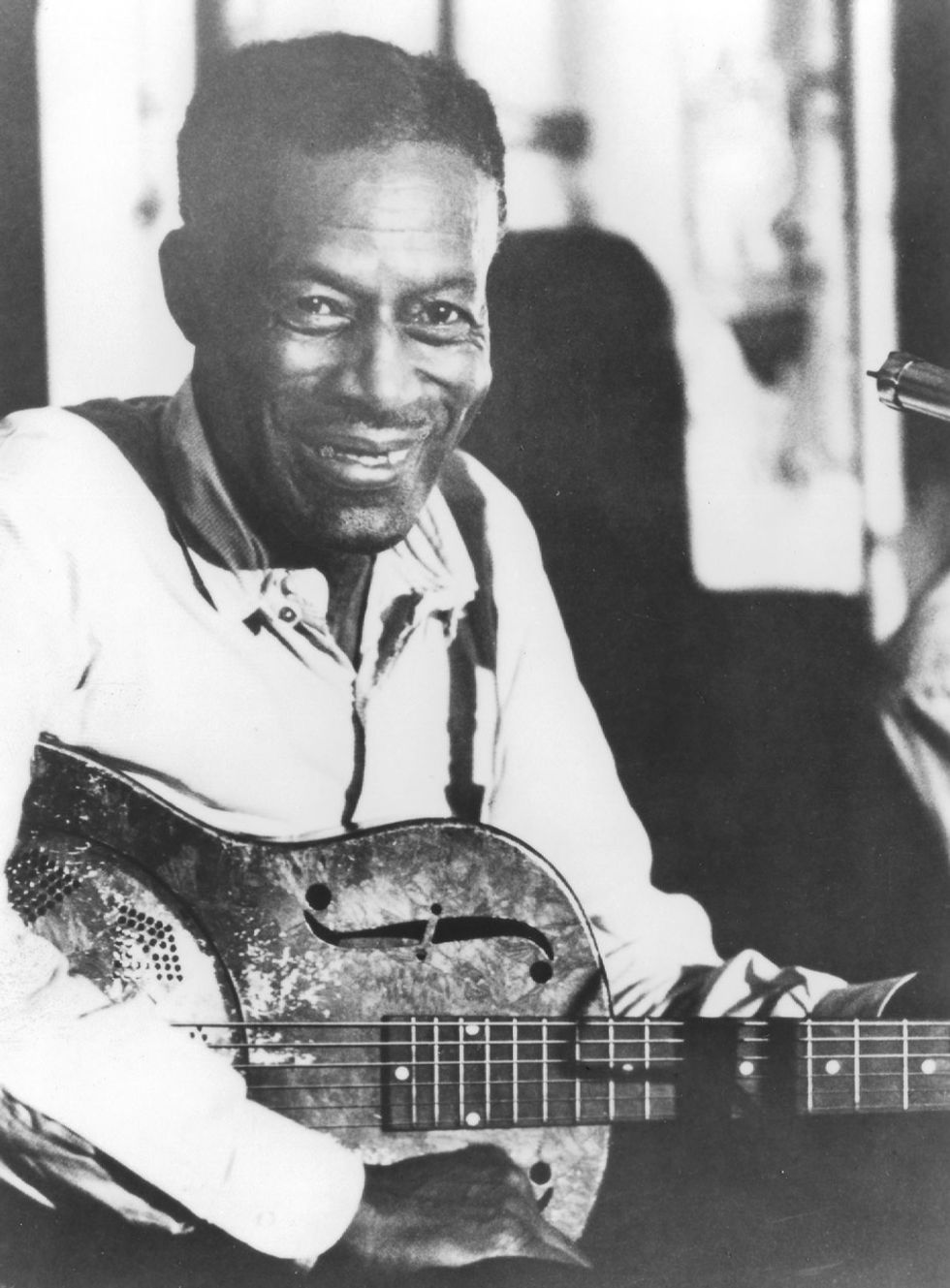
Son House is one of the best-known resonator players in Delta blues, largely thanks to his 1960s comeback and the popularity of his much-covered “Death Letter Blues,” which he first cut as “My Black Mama (Part 2)” in 1930. He holds a National Duolian model in this late-career promotional photo.
Hello, Dixie!
While lap-style guitar had its birth in Hawaii, these days resonator guitars are more typically heard in the hands of players firmly rooted in the musical traditions of the American South—from Taj Mahal to Eric Clapton to Jerry Douglas to Derek Trucks to Doug MacLeod. To find out why, we need to return to the Great Depression.During the Depression, many Americans were on the move looking for jobs. People from the South started migrating north to major cities like New York, Kansas City, and Chicago—which were modern and comparatively bustling, even in such hard times. But in the South, full electrification was decades away, which almost seems hard to believe in retrospect. Poverty was at epic levels all over the country, but in the largely agrarian South, it was double epic. Folks were literally dirt-poor.
Without electricity, amplifiers, which began to be sold in the mid 1920s, were an impossibility—even if a sharecropper could afford one. Which he could not. So rural Southern blues players and early country musicians became pioneering adopters of the resonator guitar. Think of classic recordings by Son House on the blues side and Cliff Carlisle, who recorded with Jimmy Rodgers, on the country music side. And while they were first exposed to the sound via Hawaiian guitar recordings and radio broadcasts, the reasons for picking up a resonator were likely more practical than aesthetic. Juke joints and beer halls were loud, and unamplified acoustic guitars were quiet—at least until the resonator guitar came along. The sharp and bold tones produced by the cones and body construction of these then-new instruments could compete with the rest of a small band or orchestra, and cut through the sounds of a country dance, a Saturday night fish fry, and maybe even a knife fight.
Early blues players generally favored the roundneck Nationals, with their rear-facing 9.5" aluminum cones, and country and bluegrass pickers went for the wooden-bodied squareneck Dobro’s more open sound, with its larger 10.5" front-facing cone. That set a pattern of preferred instruments for both styles that continues today.
And speaking of today, the modern resonator is a much more elite beast—straddling the worlds of tradition and modernity. They come in a larger variety of shapes and sizes, with cutaways and parlor designs and openings figured to let more sound emerge, among other refinements. Some have solid bodies—initially introduced by Supro and National and taken to new heights by the current National Reso-Phonic brand and others. And electricity has worked its magic.
As with acoustic guitar, pickup systems can now reproduce the actual sound that comes from resonator guitars. Intonation, which has long been an issue—especially with metal-bodied resonator guitars—has been improved via compensated nuts and saddles. String manufacturers even make sets specifically for resonators. Plus, player demand for tone and durability continues to compel manufacturers to choose high-quality wood and metals, and to bolster internal designs. Sandblasting and other etching techniques even allow metal-bodied guitars to have more distinctive designs on their fronts and backs, although the palm-trees-and-surf imagery that adorned many early steel-bodied resonator guitars remains a thing of beauty.
Those designs can still often be found today on guitars bearing the tried-and-true historic names of National, Dobro, and Regal—although National is now a brand made by the National Reso-Phonic Guitar company, which was founded in 1989, Dobro has been a Gibson imprint since 1993, and Regals are made in Korea by Saga Musical Instruments.
So, You Want a Resonator Guitar
If you go shopping for a resonator guitar, there are some basic got-to-knows you should have in your brainpan—just so you understand what you’re looking at. Of course, your final decision should be based on playability and what sounds best to your ears. But here’s a look at the instrument’s basic bones.Roundneck versus squareneck. That’s pretty simple. Roundneck resonators are the kind you play like a conventional acoustic or electric guitar, and they’re a good entry point for the majority of players. Think Son House, Clapton, and Trucks. When slide enters the picture with roundnecks, it’s typically a tube-shaped finger slide, like a bottleneck.
Squareneck resonators are supported horizontally and played with the same angling as a lap steel or pedal steel guitar. They have a special nut and bridge that raises the strings high above the fretboard, so they must be played with a slide—typically a tone bar of some kind, held with a combination of fingers and the palm. That’s how Uncle Josh Graves did it when I was a kid, and how Jerry Douglas, Rob Ickes, Randy Kohrs, and others do it today.
Normally hidden behind a shiny coverplate, this biscuit and single-cone assembly sports a National spiral cone. The round wooden disc is the biscuit, and the bridge is seated on top. After the coverplate is screwed back onto the guitar’s face, a metal handrest arches over the bridge and strings to protect the bridge during play. Photo by Richie Owens
Cones and bridges. Not to be mistaken for a John Lennon album title, cones and bridges are what makes resonator guitar resonate. There are three kinds of designs to consider: the biscuit bridge with a single cone, the tricone, and the spider bridge with a single cone.
Let’s bite into the biscuit and single cone first. In this design, the cone faces inward. The biscuit is a small disc, typically wooden, that is positioned in the center of the inverted cone and protrudes above the guitar’s body. Atop the biscuit sits the saddle, which is usually wooden and rests in a slot on the biscuit. The cone, by the way, is supported by a circular ridge built into the bottom of the guitar’s body. Got that?
This design works especially well with metal-body guitars, like the kind the old bluesmen used to cut through the squall of noisy juke joints. Why? It tends to create a booming fundamental tone. The trade-off for that volume is less harmonic complexity. In wooden bodies, this design is not quite as thunderous.
With its “hood” off, this National Tricone displays its three downward-aimed cones and reveals how the T-shaped bridge makes contact with all three cones to transfer the energy of the moving strings. Photo courtesy of National Reso-Phonic Guitars
The tricone. Yep—this intriguing design has three cones and a T-shaped bridge that helps get the string vibrations to all of them. The saddle on a tricone straddles a leg of the T, and these cones also face downward.Since more energy gets transmitted to a more complex cone array, tricone models tend to be more harmonically complex and produce more overtones than single-cone-with-biscuit guitars. With a tricone resonator guitar, notes hang in the air a little longer, even if they’re less bold. And tricones sound really sweet for slide. Typically, this design is found in metal-body guitars.
And finally, along comes the spider. In the spider bridge with single-cone design, the cone has an interior raised section. Think of the cone as “W”-shaped. The aluminum bridge makes contact with the cone at its edges and the apex of its raised center, which has a slot that holds a wooden saddle. More contact equals more transmission of string vibration. Oh yeah—and the cone faces forward, like the speaker in a guitar amp. Its sounds are projected out of, rather than into, the body.
The aluminum spider bridge makes contact with both the outer rim of the “W”-shaped cone and its raised interior. Photo by Richie Owens
This design is typically employed in wood-body resonator guitars, and these guitars often have specially designed soundwells to add to the sonic projection. Between that, the forward-facing cone, and the high-contact spider bridge, these are loud suckers. And they often have a tonal character that could be described as honking. Listen to your favorite bluegrass and country resonator pickers, and you’ll hear it.
There’s one more thing about resonator guitars I haven’t yet mentioned, but you likely read it between the lines. They are the first distinctly American variation on the guitar—born in the U.S.A., even if a crafty Slovakian invented them. And before you go off to explore resonators on your own, I would like to say that John Dopyera should be considered the Thomas Edison of the guitar industry. His legacy includes not only resonator guitars, but the foundation on which the Valco family of products were established … and more, with connections to the Rickenbacker and Fender legacies. (But that’s another story!) So his influence extends from Beauchamp to Bashful Brother Oswald to Jimmy Page to Chris Whitley to Jerry Douglas and beyond. Not bad for an immigrant who kicked it all off by wanting his own little instrument repair shop. So maybe, in some way, the sound of the Dobro is also the sound of the American Dream.




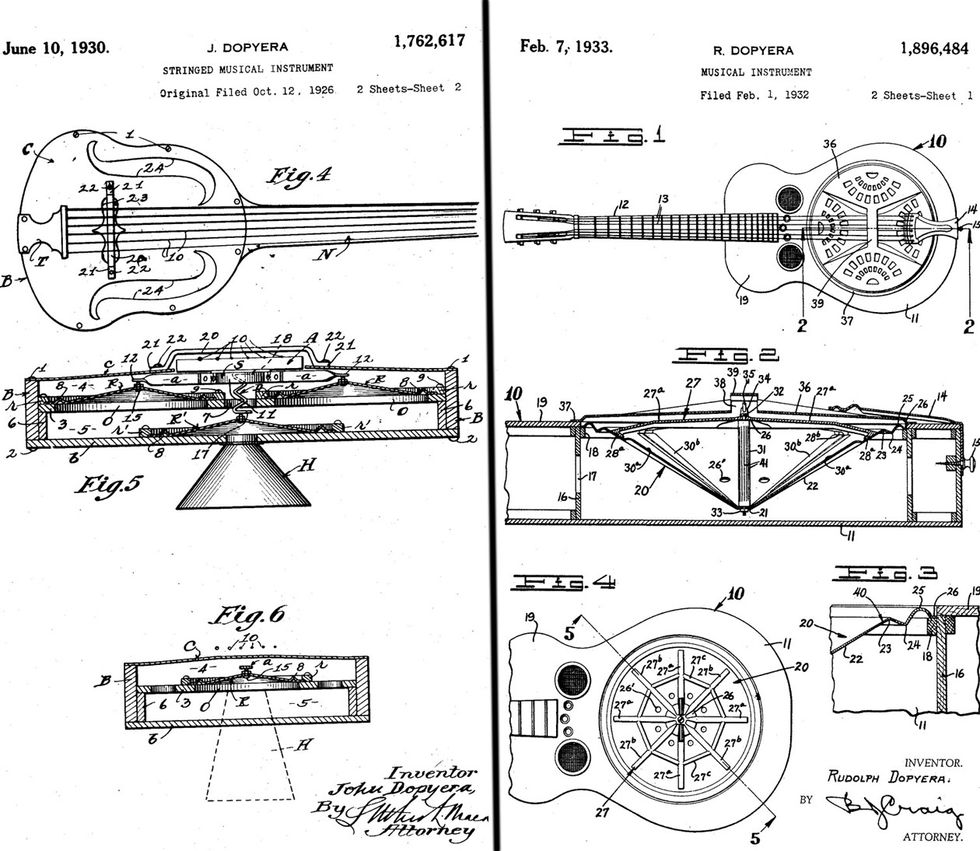
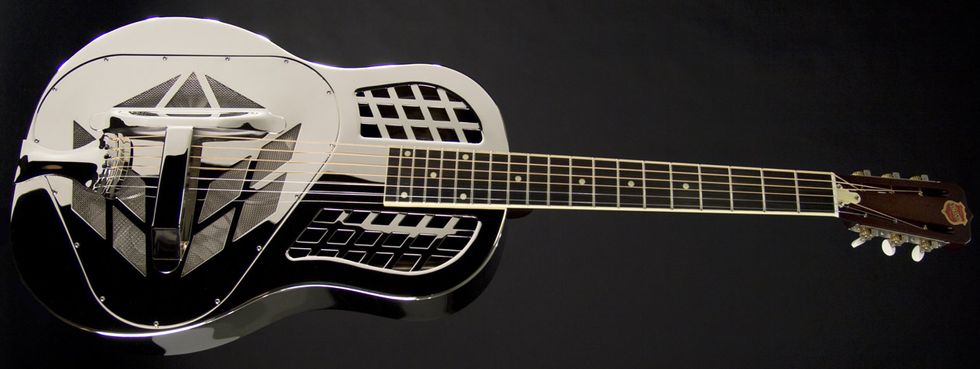
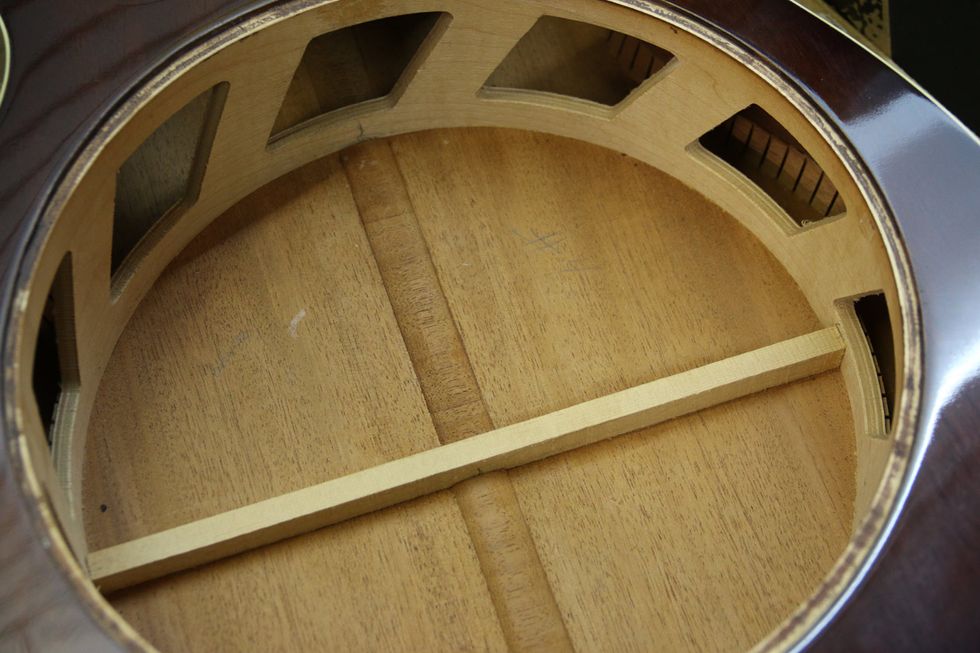
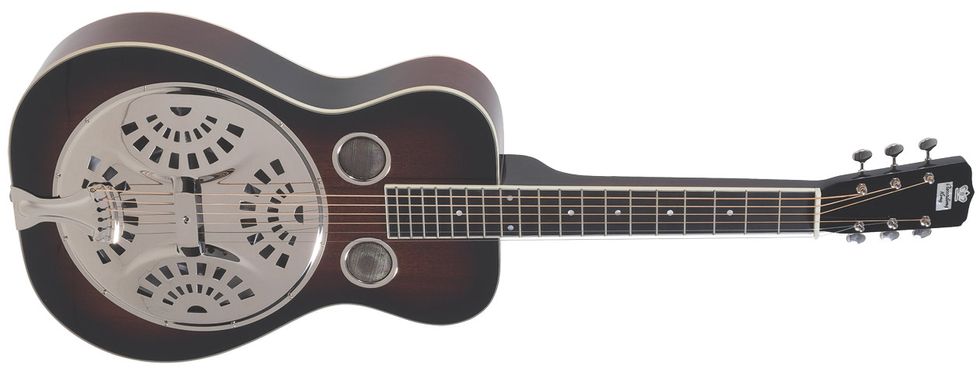
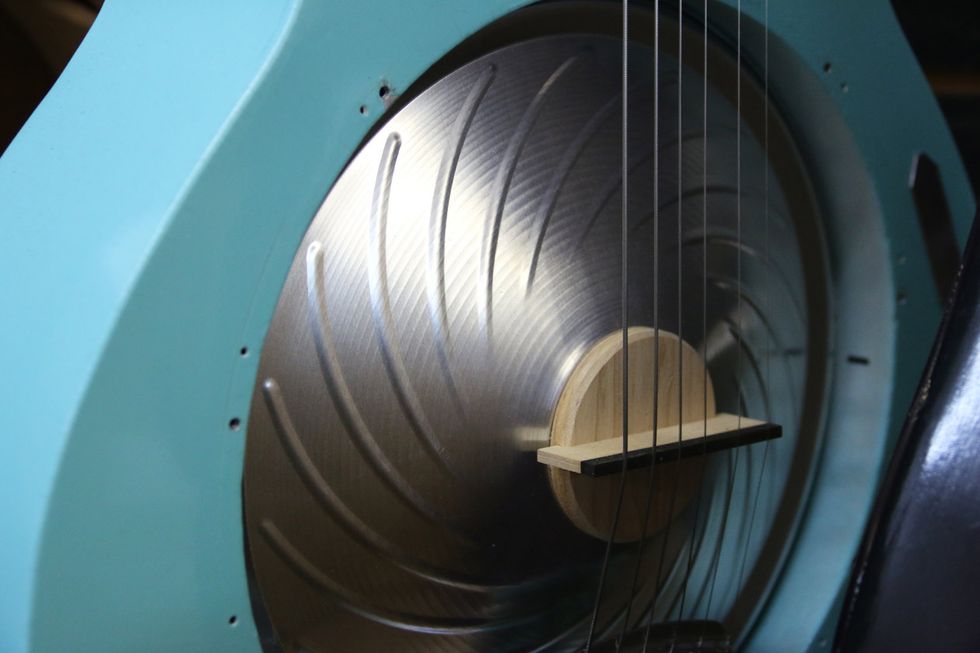
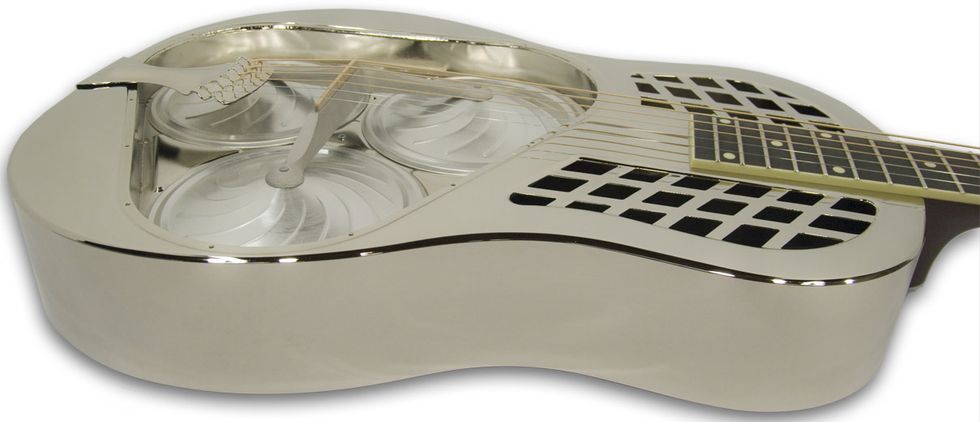
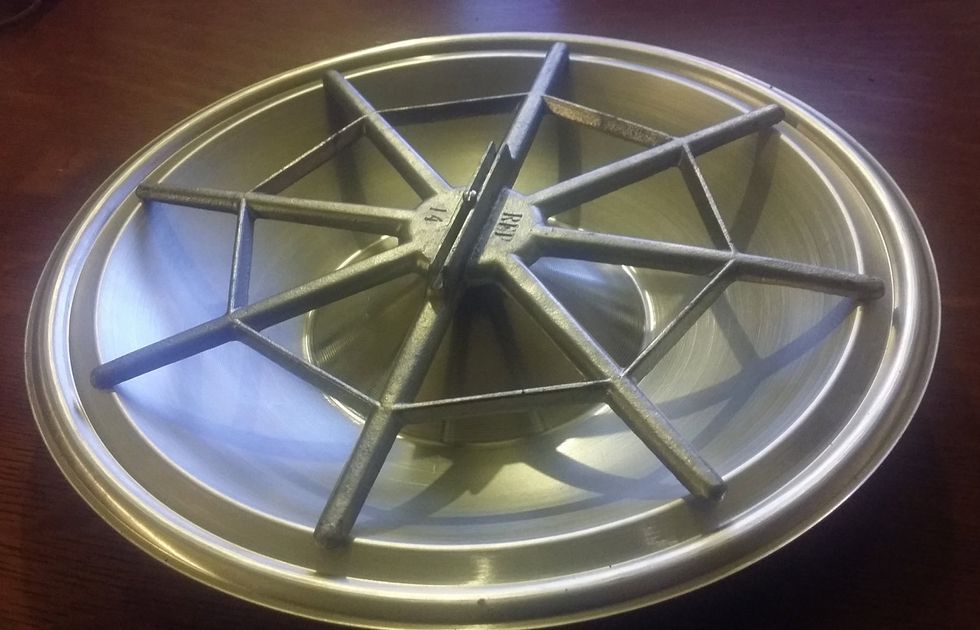







![Rig Rundown: Russian Circles’ Mike Sullivan [2025]](https://www.premierguitar.com/media-library/youtube.jpg?id=62303631&width=1245&height=700&quality=70&coordinates=0%2C0%2C0%2C0)








